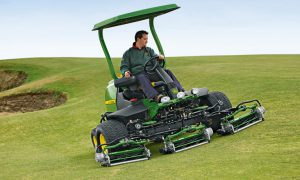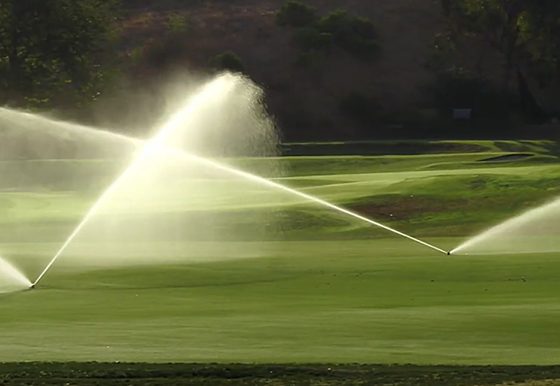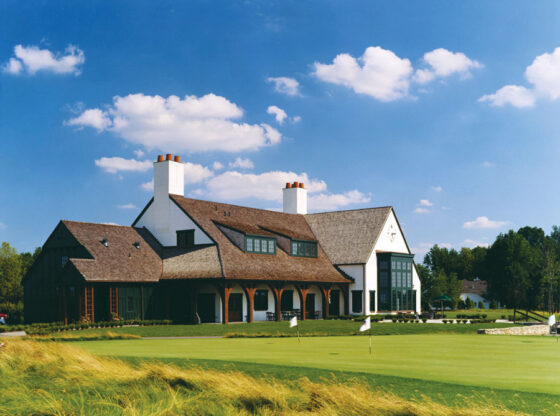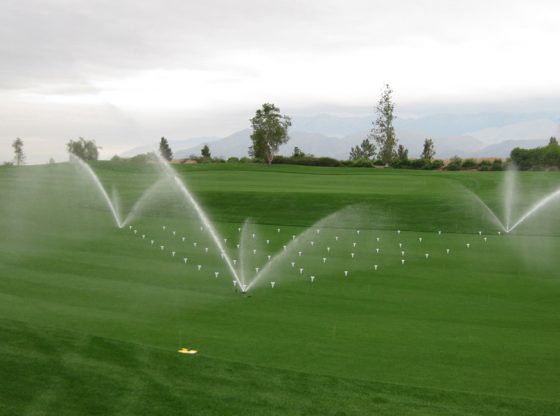When a golfer steps onto the course, he/she expects a good game. They expect fast, easy putting greens and lush green turf. But, they don’t realize it’s hard on your end to accomplish both. Turf management takes skill and balance. The demand for faster putting greens is putting added stress on turfgrass and on golf course superintendents.
The fastest and easiest way to increase speed is to lower cutting height. Although, doing so creates consequences. When you increasing the stress level on grass the likelihood of algae and moss invading greens is higher.
Change in Maintenance Techniques
The standard mowing height for golf greens has been about 0.125 inch. A good speed for the green has been around 7.5 to 8.5 feet. But, because of the demand by golfers for faster greens and longer rolls, superintendents are being pressured to alter their practices. By meeting this demands, it’s making it tougher to keep greens growing and “green.”
Among spectators, there’s a misconception that golf course superintendents simply pour on water and fertilizer to keep greens lush. As you know, it is not that simple. Management has shifted from a landing service for balls to an ideal putting surface for golfers.
Mowing height has now begun to shift to around 0.100 inch to maintain a speed within a range of 9.5 to 10.5 feet. To maintain this height and preserve the quality of the course, management techniques are forcefully changed. Smooth rollers are now being used on greens, instead of a grooved roller because they are more gentle on the grass.
 This change in course management also effects labor and budget. Courses that have shifted to rolling greens after mowing as a way to increase speed, have also increased costs. Adding another piece of equipment to buy and maintain, plus the added labor cost to operate it adds to the budget.
This change in course management also effects labor and budget. Courses that have shifted to rolling greens after mowing as a way to increase speed, have also increased costs. Adding another piece of equipment to buy and maintain, plus the added labor cost to operate it adds to the budget.
Fertility has also changed to meet these demands. Fertility has shifted to slow grass growth,. This means cutting back on nitrogen(N) to below 2 lb. per 1,000 sq. ft. per year. In addition, the potassium (K) level has been increased to improve stress tolerance. Where ratios used to be 1-1 or 1-2 N to K, they now may get up to 1-3 or even 1-4 N to K.
To meet this demand superintendents are required to really keep on top of turf conditions, and pay close attention to water and fertility. Fungicide also poses a threat in some hot and humid areas. Depending on the area, these demands may be less likley than others. Areas such as Las Vegas experience 100+ degree days and threat of water shortage. These conditions challenge turf managers and require higher turf cuts. Keep in mind the type of turf your course contains. Certain turf may be more sensitive than others, so your management will have to be adjusted further.
Change in Course Design
The demand for greater green speed is also changing how some courses are laid out. The demand for faster greens will mean flatter and often more boring greens in the future. Greens that were designed for speeds of 8.5 to 9 often are fit for speeds of 11 and 12. The goal is a perfect green with a more consistent surface. Still, courses may have to alter greens design if they are going to continue trying to increase speed.
The Issue with the Cut
Although cutting shorter is an option, other methods should be taken first to increase speed. Rolling a course, doing a vertical mow to thin the canopy, keep the greens dry and using a growth regulator will aid in this effort. There is a fine line in managing grass. If you stress out the turf too much you will be at a point of no return.
New courses have the advantage of being able to plant newer bentgrass varieties, which can take more aggressive management to enhance speeds. Older courses have to use other methods to get higher speeds. You don’t want to sacrifice the health of the grass just to increase green speed. Making a course unplayable just to meet these demands won’t help you. Find a happy medium between speed and turf grass health.












